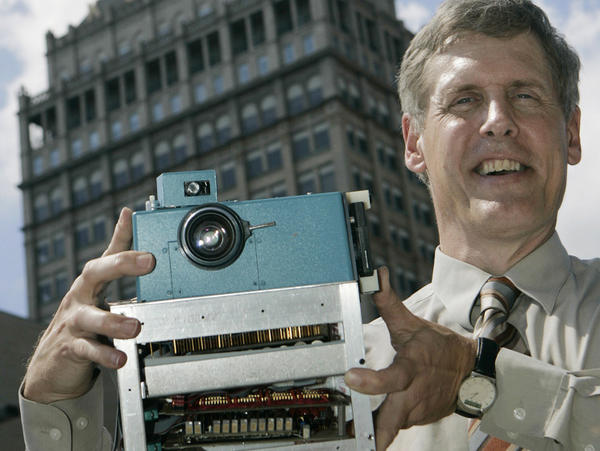A kodak engineer constructed the first digital camera in 1975 they didn t want to go digital they went bankrupt in 2012

A Kodak Engineer Pioneers Digital Photography, but the Company Faces Bankruptcy in 2012

In 1975, a brilliant Kodak engineer, Steve Sasson, constructed the world’s first digital camera. Little did he know that his creation would revolutionize the photography industry and change the way we capture and store memories forever. However, despite this groundbreaking achievement, Kodak’s reluctance to embrace the digital era played a crucial role in their eventual downfall as they filed for bankruptcy in 2012. Let’s delve into the fascinating journey of Kodak and how their hesitancy to adapt to the digital wave ultimately led to their demise.
The Birth of Digital Photography
The digital camera invented by Steve Sasson at Kodak’s research center was an innovative feat for its time. It weighed a hefty 8 pounds (3.6 kg) and consisted of a cassette tape for storing the captured images. The camera captured black and white images with a resolution of 0.1 megapixels, a far cry from today’s high-quality standards.
Despite the primitive nature of the invention, Sasson recognized its potential and presented it to Kodak’s executives. However, instead of embracing this new technology, the company was primarily focused on preserving its lucrative film business. Sasson’s invention was viewed more as a disruption than an opportunity. (source: Mashable)
The Reluctance to Go Digital
Kodak was an industry giant known for manufacturing film and cameras. They played a key role in popularizing photography and had a substantial market share in the film industry. The shift towards digital photography presented a significant challenge to the company’s traditional business model.
Instead of adopting the new digital technology, Kodak opted to protect its existing film business. They continued to invest in film manufacturing while overlooking the vast potential of the digital market. This reluctance to adapt would prove to be detrimental to their future success.
The Digital Boom and Kodak’s Decline
As the years went on, digital cameras gained popularity and started overtaking traditional film cameras in the market. Competitors such as Canon, Nikon, and Sony recognized the potential of digital photography and invested heavily in the technological advancements required for better image quality and ease of use.
Kodak, on the other hand, was slow to adapt and failed to capitalize on the digital camera revolution. The company’s focus on film manufacturing became increasingly irrelevant as consumers embraced the convenience and flexibility of digital photography. Kodak’s market share plummeted, and they could no longer sustain their dominance in the industry.
The Tragic End
Despite making attempts to shift their focus to digital products in the early 2000s, Kodak was already late to the game. They faced intense competition from well-established digital camera manufacturers and struggled with financial difficulties. In 2012, Kodak filed for bankruptcy, unable to recover from their missteps and adapt quickly enough to the changing landscape of photography.
Final Thoughts
Kodak’s story serves as a cautionary tale for businesses that resist innovation and fail to embrace emerging technologies. The company that once held a prominent position in the photography industry crumbled mainly due to their reluctance to embrace the digital revolution. It serves as a reminder that in a rapidly evolving world, adaptability and forward-thinking are crucial for long-term success.
Note: For more information on this topic, please refer to this Mashable article.
Share
Related Posts
Quick Links
Legal Stuff


